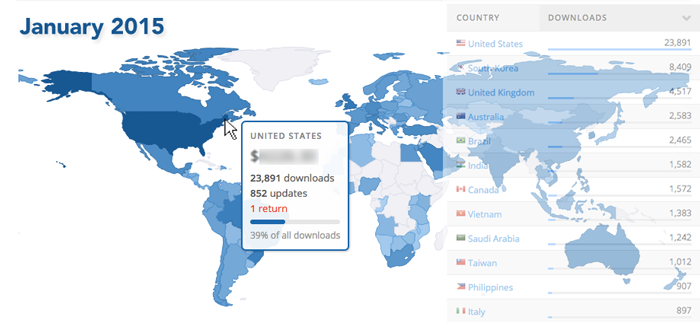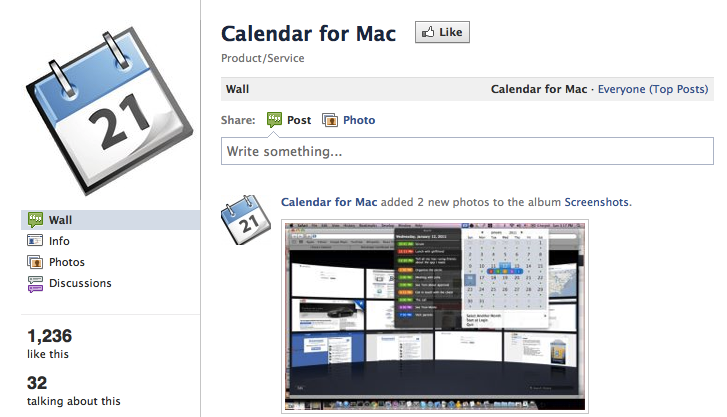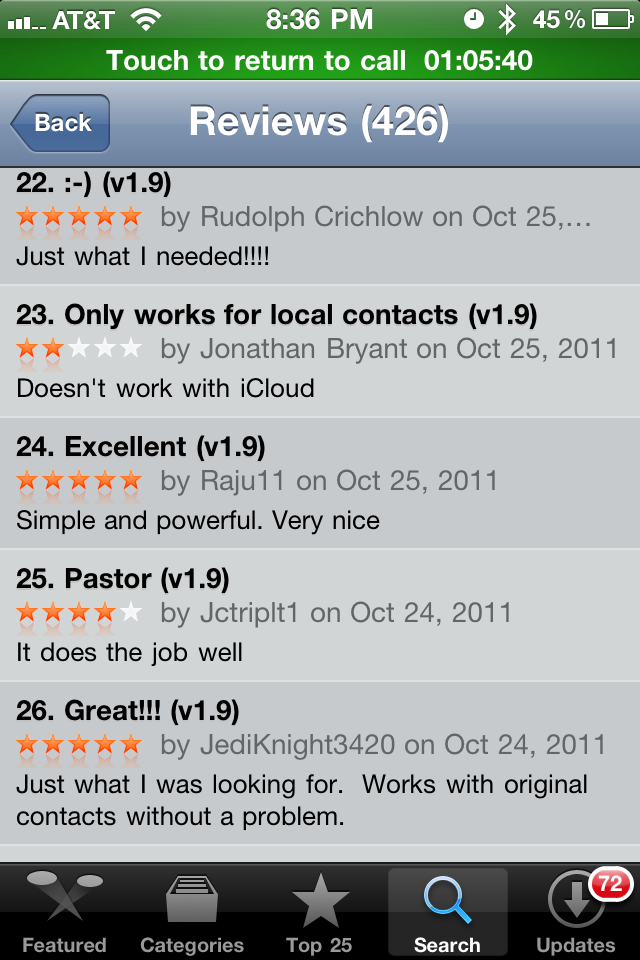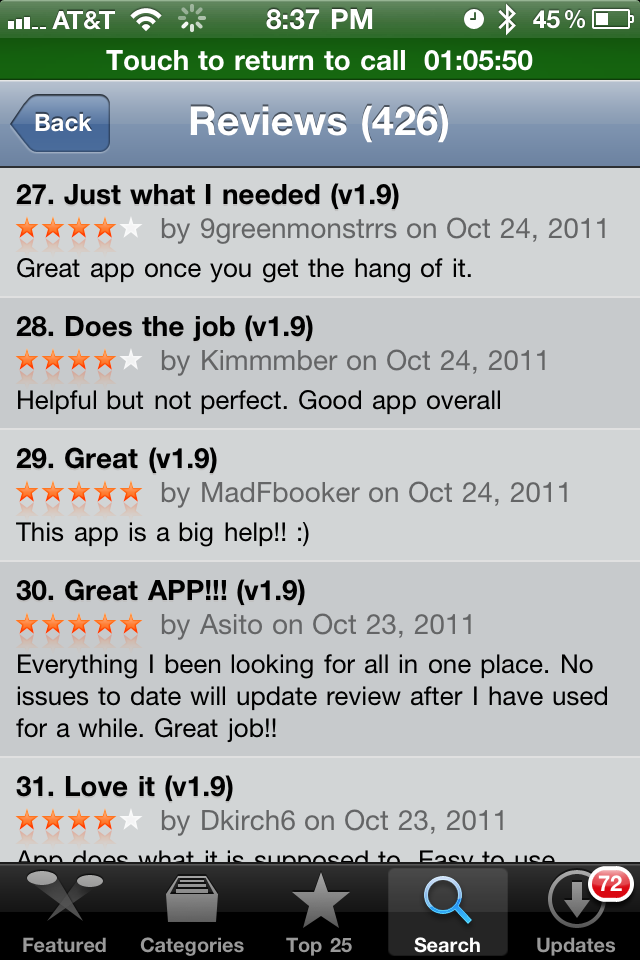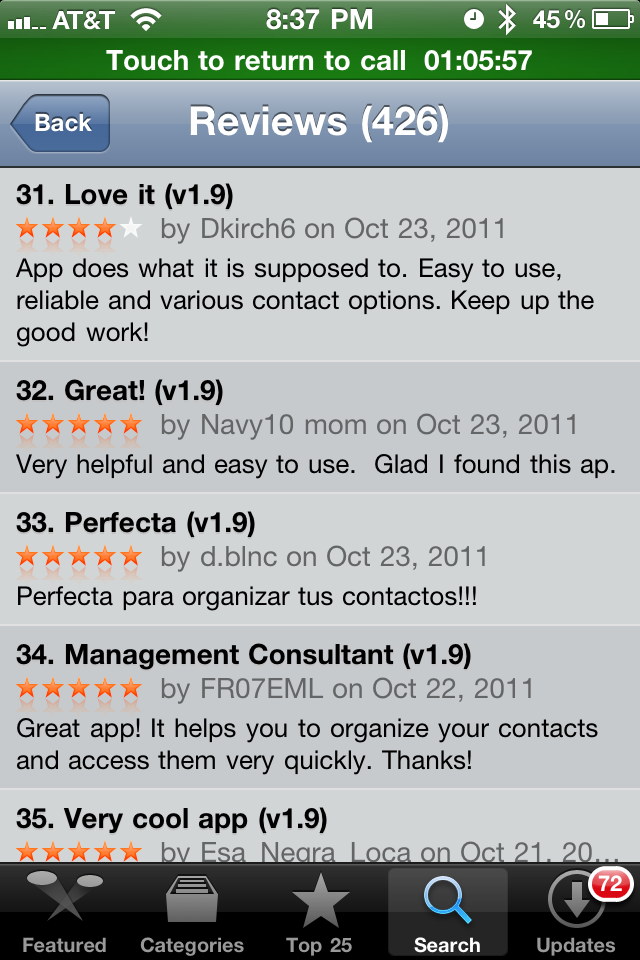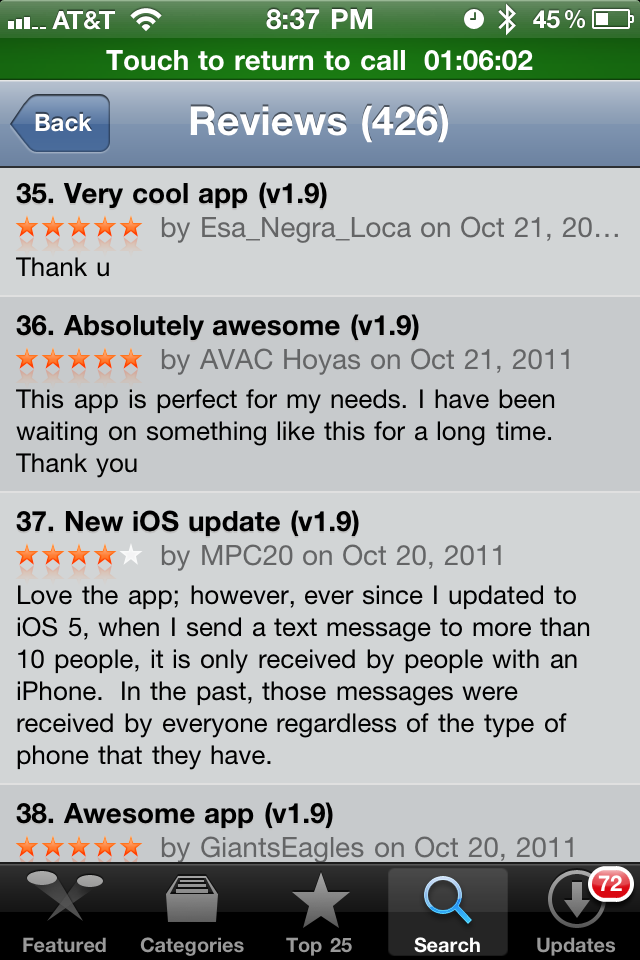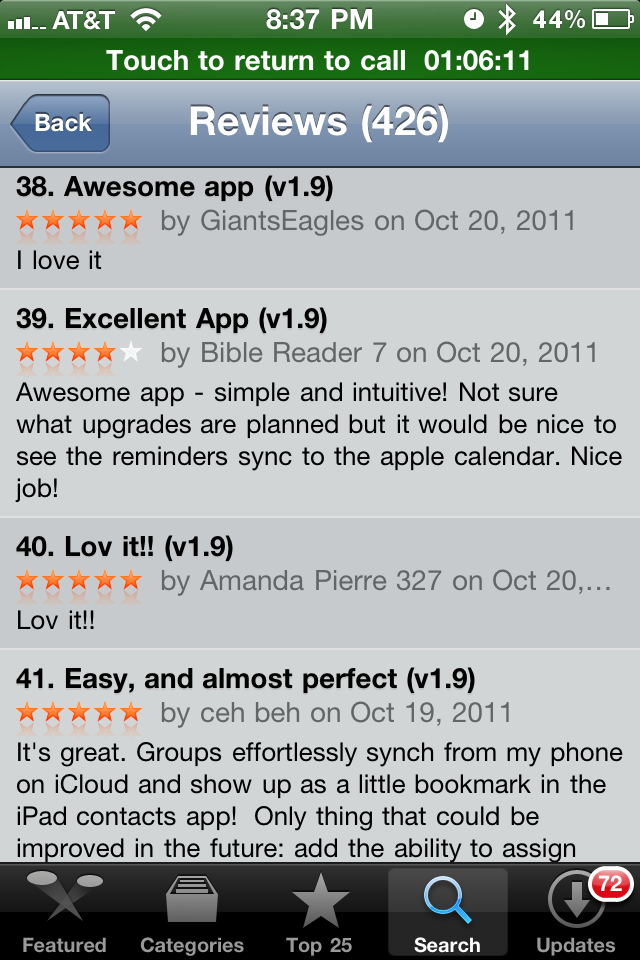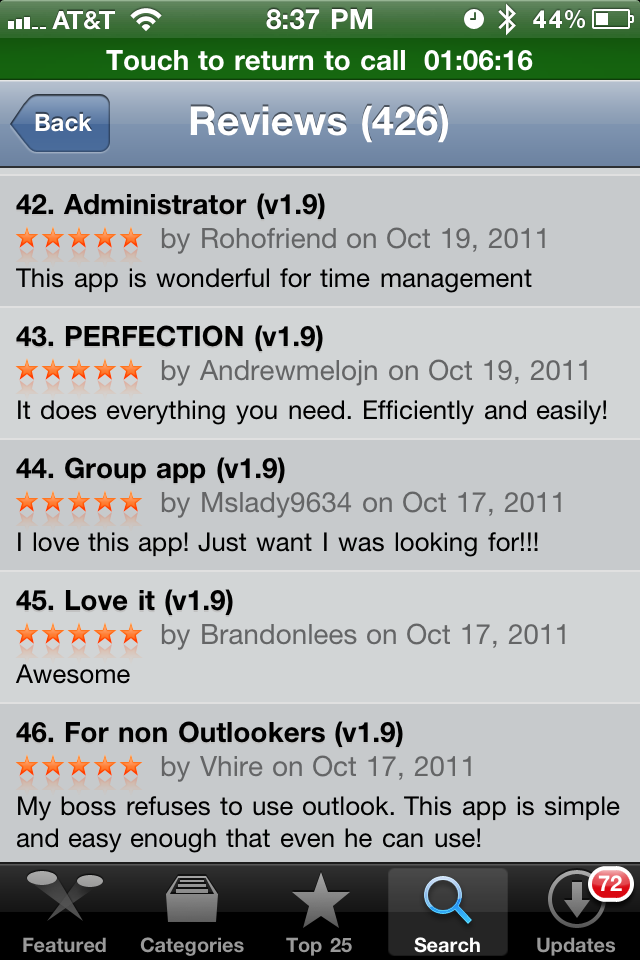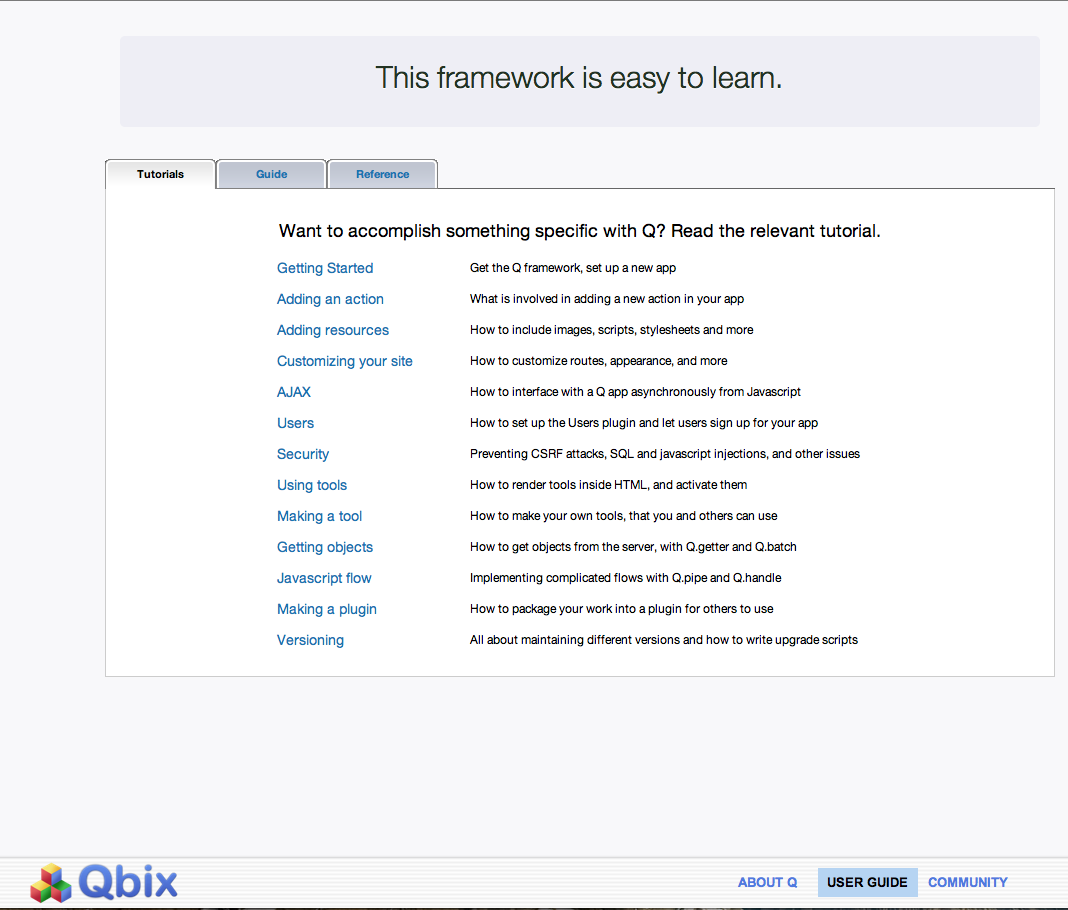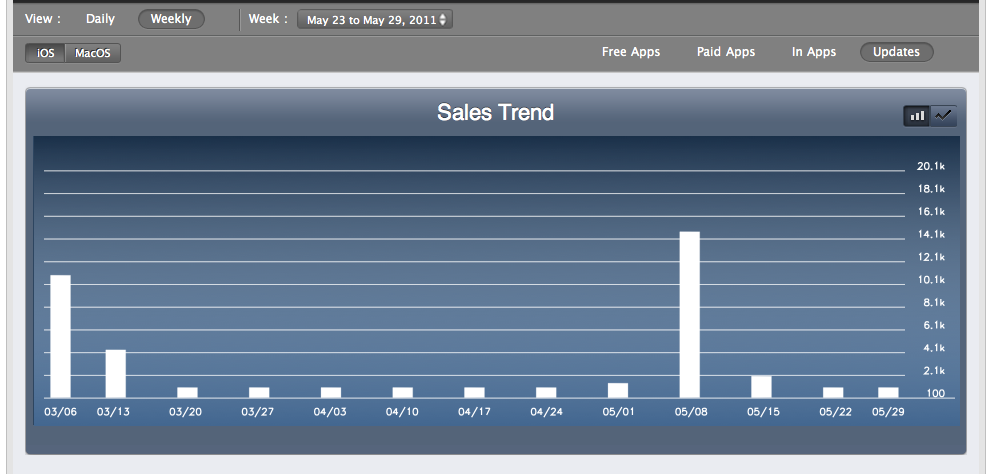Maximize your fixed cost marketing before you raise money and throw it at user acquisition.
No one at Qbix is an expert in traditional marketing. We’ve focused on other things: carefully designing user experiences, building great products and steadily architecting solutions to challenges facing social apps, which have come together in a unified platform. And until now, it has served us well. From day one we have proudly displayed our user metrics on our website:
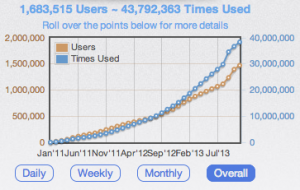
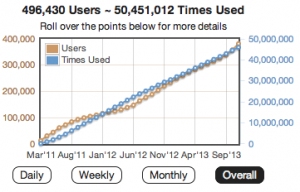
Most of the user base growth has been linear, because both Groups and Calendar have so far been for personal use without much reason to invite friends. That will change this summer, but for now, let’s analyze what occurred.
We have had very few articles written about us or our apps until now. We didn’t actively seek to take part in promotions. We have spent next to nothing on marketing or PR. In fact, until now, we haven’t even raised very much money compared to Silicon Valley startups, but the vast majority of what we did raise went into web hosting and development. All this growth was achieved organically, using existing systems the way they normally work.
To be honest, we didn’t do this on purpose. We actually did put in some effort to get stories about our apps, but without prior relationships, it proved to be more difficult than we thought. We tried advertising Calendar Plus (our Mac app which sells for $9.99) but didn’t find an ad network that would target ads by operating system. We tried raising a Series A round two years ago, but weren’t successful, being inexperienced with fundraising – as well as being on the east coast in the middle of a Series A crunch with very few personal connections. Still, we continued basically doing the thing we knew how to do best: build products and iterate them, making sure our growing user base stuck around.
Two years ago, when we launched our apps, we wrote about our progress and how we were able to achieve it. Since then, we’ve come a long way, our team has grown, and we realized that our experience can be valuable to others. We want to continue sharing those lessons which we feel are making the greatest difference for us.
Customer Acquisition Cost
The truth is, if your app already converts visitors into paying customers at a proven rate, you’re probably ready to do traditional marketing. As long as your customer lifetime value exceeds your customer acquisition cost, you will probably be able to find an investor to finance this operation.
In reality, though, the trade-off is between the uncertainty in how much a customer will really pay over time, vs. the friction involved in an up-front purchase. If you could pull it off, it would be much better to create a product with a free trial where customers eventually sign up for a subscription. By properly using social elements in your product, you can reduce your customer acquisition cost tremendously, and actually prove you can get loyal paying customers. Once you’ve done this, then you can go big, and you won’t have to go home. That is what the rest of this article will be about.
Discovery
The concept of fixed costs and variable costs are well known in marketing and economics. Looking back, one of the biggest reasons we were able to get where we are is that our strategies all involved fixed marketing costs. They used existing infrastructure, but sometimes took advantage of certain “hacks” to gain an advantage over the competition.
There are many ways to stand out in creative ways. One of the most obvious ways we did this was to get in early and grab names such as “Groups” and “Calendar” to begin with. Being aware of how the app store worked, we knew that users would search for a particular word to solve their problem, and we named our apps with that word. This, combined with making our apps free, caused them to rank #1 in the search.
If you’re starting a business, the first step isn’t to register it with the state – it is to make sure a good domain name is available, one that can be a good brand which stands out in searches. That is how many people will find you. The domain “Qbix.com” cost us $2000 (how we got that is a story for another day). RapGenius is another example of a website that is found entirely organically without marketing, thanks to song lyrics. They didn’t have to pay lots of sites to get good search engine ranking.
Certainly, there are other, more external ways to be discovered. Most of them rely on viral marketing. And while guerilla marketing can be fun and effective, we are not experts on it, and thus we aren’t sharing our experience here. Almost all our efforts that succeeded so far have been intrinsic in the actual products we build.
Thoroughness
At Qbix, we have “best practices” documents for lots of things we do, from hiring to releasing a product. When we find a major tactic or strategy that worked for us, or for someone else, we save it there. Over time, this has proved to be invaluable, allowing us to learn from previous mistakes (much like regression tests are for software) and brainstorm new solutions from existing patterns (like someone who is fluent in a language).
For example, we found out the hard way that apps are supposed to proactively ask users to rate them in the store. The message should go something like, “If you like our app, could you please review it?” Without this, people were much more likely to rate the app if they had a bad experience, leading to much lower ratings. Moreover, the number of ratings – especially positive ratings – increased when we asked people on every 3rd day. Similarly, the amount of bad ratings decreased when we placed the Support link and FAQ section prominently in the app, pre-empting many a user flow that ended up in a bad review. (Sadly, an app like Groups on the iOS can run into OS bugs in some environments. As frustrating as it was, sometimes the best we could do is build a clunky workaround.)
After discovery, thoroughness is the next big factor for maximizing the bang for your buck. Each particular technique can make a difference when the factors are multiplied together.
The Flow
In essence, the main thing we’re talking about is maximizing the following user flow:
Discovery -> Onboarding -> Engagement -> Evangelism -> Monetization
Whether you have an app, some kind of business, or even a nonprofit charity, you should develop metrics to measure how effective each transition is from one state to the next. Do A/B testing and iterate until your KPIs comfortably exceed the thresholds needed to achieve a good return on your variable costs. Prove this to yourself, and then prove it to others with shiny, convincing reports – or maybe even a video. Then you are ready to commit a substantial amount of money and do a land grab. It will go much further, and you will be able to raise it on better terms as well.
We have written in the past how a business can dramatically reduce customer acquisition costs by adding organic social elements. But it goes further than that. The invited user – whether they are a person or an organization – gets psychologically invested in the app the more they use it. It is here that your onboarding process becomes crucial. If you can make the user happy early on, and give them what they’re looking for without making them work too hard, they will come back. The rewards have to be disproportionally large in the beginning.
One of the most effective ways to achieve this is to present new users with useful crowdsourced data to explore, clone and interact with. As they do this, transactional notifications pull other users on the app into social interaction that rewards both the old and new users, effectively providing them with genuine social feedback and releasing dopamine in their brain – not from game points but from positive social interaction. They will then voluntarily invite their friends, as part of another flow that someone initiates on the app.
Prove there is Demand
This coming year, we plan to expand into two markets that we haven’t entered yet. While we already have a good user base, and a plan to move forward, questions remain – is there demand for our solution? Are people willing to pay? And how do we market to those people?
Traditionally, these problems were solved by doing an in-depth analysis of a particular vertical. Maybe your app lets customers reserve time on someone’s calendar. It can be used by tons of professionals, but you have to pick one particular segment and build the app for them. If you guessed wrong, then you might have to pivot. The real issue, however, is that it’s much better to identify demand before investing in variable costs. First, maximize your bang for the fixed cost as we’ve been describing. Prove there’s demand, and that you can be successful in measurable ways. Only then, after you’ve done the math, raise the money and pull the trigger.
There are lots of ways to test for demand on a small scale – many of you are familiar, for instance, with using Google Adwords before actually building a website. However, there is one killer strategy that, if you can pull it off, will give your company a significant advantage over its competitors.
Put simply, create a social product that people find their own reasons to use. This can be well-executed chat app such as WhatsApp, or it can be a social jukebox. But whatever it is, it must be social and you must iterate until you have good metrics on discovery, engagement, and so on.
After a while, look at what people are using it for and find out who stands to benefit from this. Those are your customers. Now you can devote your limited resources to building the best onboarding process for those customers. These are still fixed costs. You haven’t begun marketing yet. You first must beta test with actual customers and iterate until the onboarding works like a charm.
Now, incentivize your existing users to invite your customers. Perhaps you’d like to use in-app credits which they can use at the customer’s business. Usually, the customer won’t mind rewarding the user who invited them, and chances are, they were friends long before your app came along. Once the potential customer is invited, your onboarding process can take over. The more results you get for them (such as importing their data into your social app’s system, giving them ways to engage your users, etc.) the more they will be willing to pay later.
Finally, incentivize customers to invite more users by cross-promoting them in your app. Give them promotional materials (with your app’s QR codes) to give to their members, and in return
And if you’ve done all the above, and you still want to grow faster, then you can finally begin engaging in variable-cost marketing.
We’d love to know whether any of the ideas here were helpful. Tell us what you’re working on in the comments below.

 Get blog updates
Get blog updates
